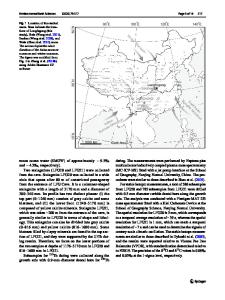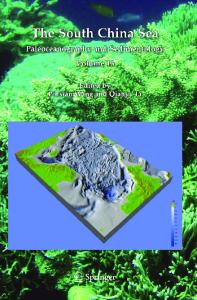Paleoenvironmental records from the northern South China Sea since the Last Glacial Maximum
- PDF / 1,091,165 Bytes
- 17 Pages / 595 x 842 pts (A4) Page_size
- 31 Downloads / 394 Views
Paleoenvironmental records from the northern South China Sea since the Last Glacial Maximum GE Qian1,2∗ , CHU Fengyou2 , XUE Zuo3 , LIU J Paul3 , DU Yuansheng1 , FANG Yinxia2 1 2 3
Faculty of Earth Sciences, China University of Geosciences, Wuhan 430074, China Key Laboratory of Submarine Geosciences, State Ocean Administration, Hangzhou 310012, China Department of Marine, Earth and Atmospheric Sciences, North Carolina State University, Raleigh, NC 27695, USA
Received 21 September 2009; accepted 5 March 2010 ©The Chinese Society of Oceanography and Springer-Verlag Berlin Heidelberg 2010
Abstract Core ZHS-176 contains the paleoenvironmental records from the northern South China Sea (NSCS) since the Last Glacial Maximum (LGM). A coupled approach based on clay mineral assemblages, planktonic foraminiferal oxygen and carbon isotopes, and calcium carbonate content is used to trace the sources of the fine-grained sediment and to investigate the paleoenviornmental evolution in this area. Clay mineral assemblages are dominated by illite (average about 39%) and chlorite (about 27%), which comes mainly from Taiwan and the East China Sea. Kaolinite, which accounts for about 13%, comes mainly from the Zhujiang (Pearl) River, and Luzon Island is the main source for smectite (about 21%). The planktonic foraminiferal oxygen isotopic oscillations during the last glacial period are coeval with climate variations recorded in the Greenland ice core and Western Pacific sediment. These variations include the LGM, Heinrich event 1, Bφlling-Allerφd (B/A), and Younger Dryas. For the Holocene, three periods of strong precipitation (S1-S3) and three periods of weak precipitation (W1-W3) are identified. The oxygen isotopic record exhibits correlation with climate records from distant regions, including the high-latitude Northern Hemisphere, providing evidence for global tele-connection among regional climate. A brief, negative planktonic foraminiferal carbon isotopic excursion during B/A reflects increased methane released from marine gas hydrate due to the rapid warming of the water. By comparing calcium carbonate content curves of the core ZHS-176 with these of other five boreholes lying above the lysocline, a remarkable low calcium carbonate event is found during the early Holocene in NSCS. Key words: clay mineral, oxygen and carbon isotopes, calcium carbonate content, South China Sea, paleoenvironmental evolution
1 Introduction The South China Sea (SCS) is the largest marginal sea of the Western Pacific. It is surrounded by the Asia continent and Taiwan Island to the north and west, and the Philippine islands and Borneo to the east and south. Due to high sedimentation rate and carbonate preserving efficiency, the SCS is an ideal location for paleoceanographic studies (Qian, 1999; Zhao and Wang, 1999). The northern SCS (NSCS) is close to the Chinese Mainland and Taiwan. It receives a large amount of terrigenous sediments, which include fluvial sediment from local rivers such as the Zhujiang River and Taiwanese mountainous rivers, and dista
Data Loading...











